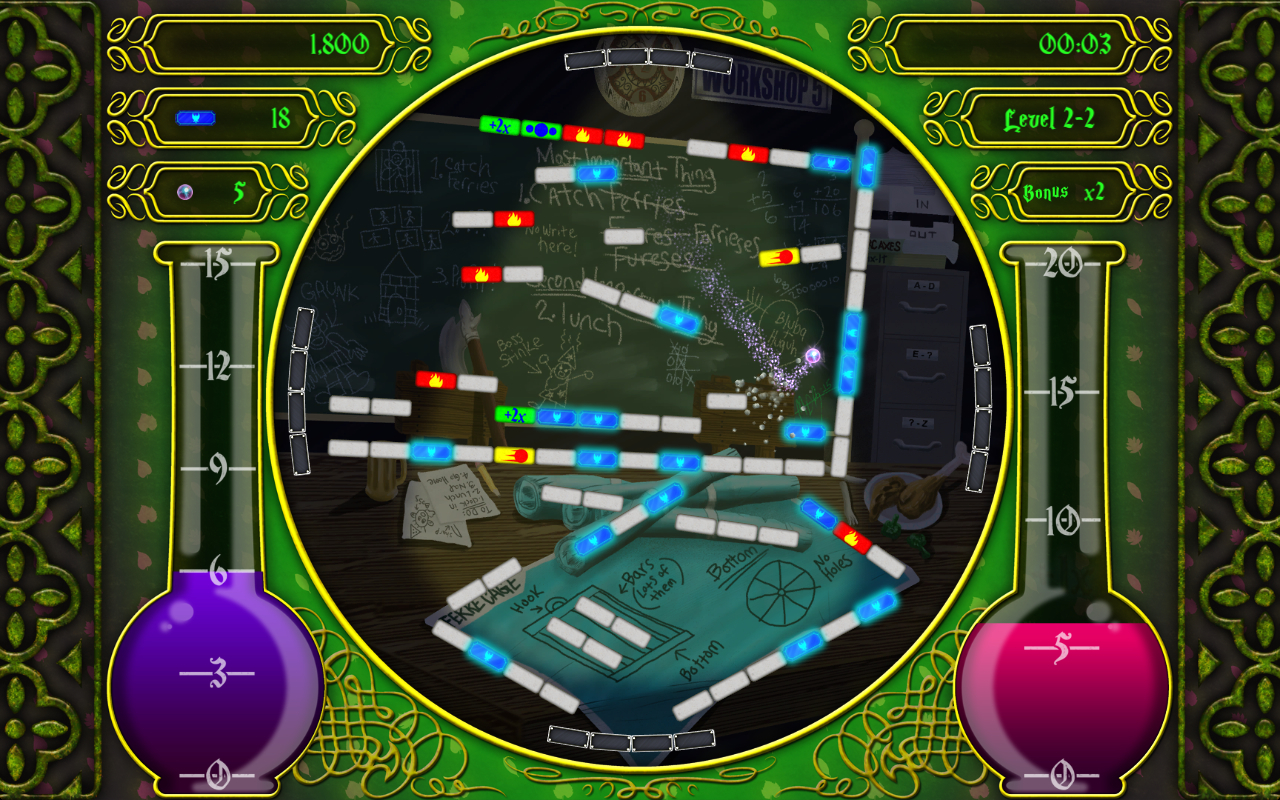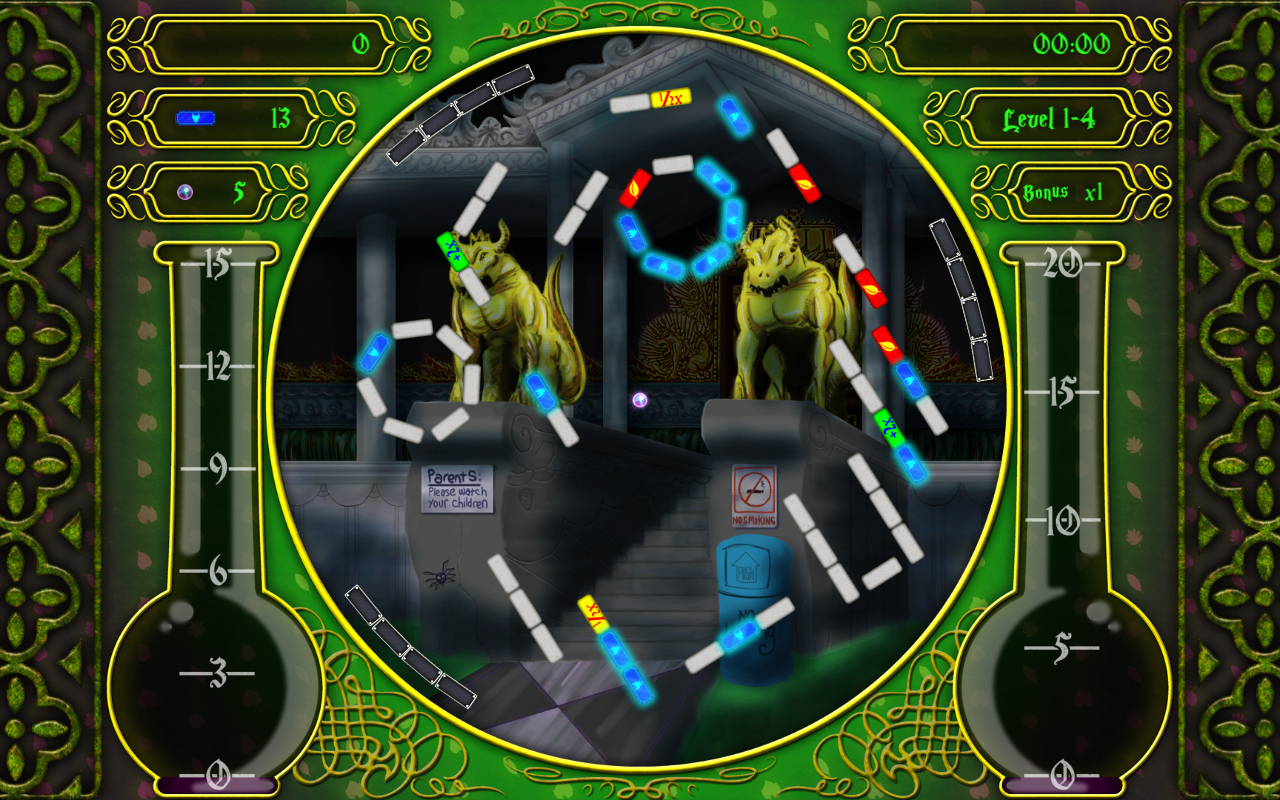Search
[{{{type}}}] {{{reason}}}
{{/data.error.root_cause}}{{{_source.title}}} {{#_source.showPrice}} {{{_source.displayPrice}}} {{/_source.showPrice}}
{{#_source.showLink}} {{/_source.showLink}} {{#_source.showDate}}{{{_source.displayDate}}}
{{/_source.showDate}}{{{_source.description}}}
{{#_source.additionalInfo}}{{#_source.additionalFields}} {{#title}} {{{label}}}: {{{title}}} {{/title}} {{/_source.additionalFields}}
{{/_source.additionalInfo}}- Details
- Category: Computer
- By J. Todd Cumming
- Hits: 5598
Magical Brickout (Mac)

Magical Brickout
Developed by: Cunning Force Games
Published by: Black Shell Media
Released: October 17, 2016
Available on: Windows, Mac OS X, SteamOS
Genre: Puzzle, action
Number of players: 1 offline
Price: $7.99
Thank you, Black Shell Media, for providing a copy of this game to us to review!
Most people who know the history of video games will admit that one of the first was a primitive table tennis simulator called "Pong." But the game required two players, and some wanted a version they could play themselves. Thus, in 1976, "Breakout" was created, and appeared in arcades – and Atari home game consoles – since then.
The game has proven to be so popular that it has been imitated and replicated many times over the past four decades. But for the most part, the formula has remained the same – the player controls the paddle and moves it back and forth to try and keep the ball from leaving the playing field, and destroying bricks in the process. Once all the bricks are destroyed, you can move on to the next level, wave, or puzzle.
Magical Brickout does something new with this formula – a move that I would even describe as truly innovative. Rather than moving a paddle back and forth, you actually rotate the entire playing field. The field is circular and, with the possible exception of indestructible metal bricks on a few of the levels, contains nothing that represents a paddle. This simple twist completely changes the formula – and the gameplay – of this familiar old design.

Strong Points: Original approach to "Breakout"; challenging levels
Weak Points: Steep learning curve; mediocre music
Moral Warnings: Some undead references
The story behind the game is presented through a series of animated cartoon panels, and some text windows that appear at the beginning of each level. An evil wizard has built a magical castle, and has trapped several fairies inside bricks. Your job is to free the fairies by destroying the bricks and, eventually, the evil wizard's sinister guardians. A gremlin will appear on the levels, and if you manage to whack it with the ball you can score extra points. Some of the bricks also contain power-ups, and others will contain penalties. A few other bricks will appear, which change based upon which stage you're playing. Each of the eight stages contains six levels, for a total of 48 levels, not counting the tutorial.
In addition to the bricks, there are a couple of other mechanics involved as well. Along the sides of the playing fields are two potion bottles. As you destroy the bricks, the bottles fill up, providing the possibility of free balls and multiplier bonuses to your score. If you lose your ball, the potions drain away and you have to start all over. Leaderboards are available, and you can see how your scores stack up against others. My name is in the top 15 as I write this, but given the newness of the game, I doubt it will be there long!
The controls to the game are sharp and responsive, and I had no trouble using either the keyboard or my gamepad. The music is pleasant, but gets repetitive before too long. The graphics are cartoonish and cute, with funny signs in the background. They can be a bit distracting at first, but as you get familiar with the level, you can focus more upon the bricks, rather than the scenery. Interestingly enough, the levels aren't randomized. The bricks are arrayed in a fashion that highlight the background elements, and the fairies always appear in the same location. The bonuses and penalties do change location every time a new ball is launched, though, so there is some randomization to keep the levels fresh.

Higher is better
(10/10 is perfect)
Game Score - 74%
Gameplay - 15/20
Graphics - 6/10
Sound - 6/10
Stability - 5/5
Controls - 5/5
Morality Score - 94%
Violence - 9/10
Language - 10/10
Sexual Content - 10/10
Occult/Supernatural - 8/10
Cultural/Moral/Ethical - 10/10
The lack of variation helps with the game, though. Although this is an original spin on the "Breakout" model, that hardly means that the game is easier. This simple difference is enough to ramp up the difficulty significantly. It can often be difficult to tell how the ball is going to bounce off a brick, especially if struck on the shorter end, rather than the broad face. The fact that the bricks don't change location helps immensely, as once you've played a level enough times, you can figure out what maneuvers tend to work the best in removing the bricks in the shortest amount of time, and with the fewest balls lost. You can score one to three stars on each level, and achievements are available for getting stars on every level. There are a total of 44 achievements to unlock, but most of them are not easy to obtain.
From a moral perspective, there isn't a lot to worry about in the game. There are a few references to undead, especially in the "Graveyard" levels, and the décor occasionally features skulls. The game focuses on magic and fairies, but it isn't apparent if you're casting spells. There isn't any occult imagery or language issues to be found here. The gremlin that appears on the levels can be hit with the ball, but simply falls backwards with a stunned expression.
Altogether, Magical Breakout is a tough, sometimes frustrating challenge, but is original enough that it's worth a try. The price is a reasonable $7.99. This is a whimsical, solid game and a fun variation of an old, familiar formula.
Incidentally, if you would like to play a free variation of the original Breakout, go to http://www.google.com. Click on "Images" and then type in "Atari Breakout" into the search field. Wait a few seconds, and then the screen will transform into the game.








